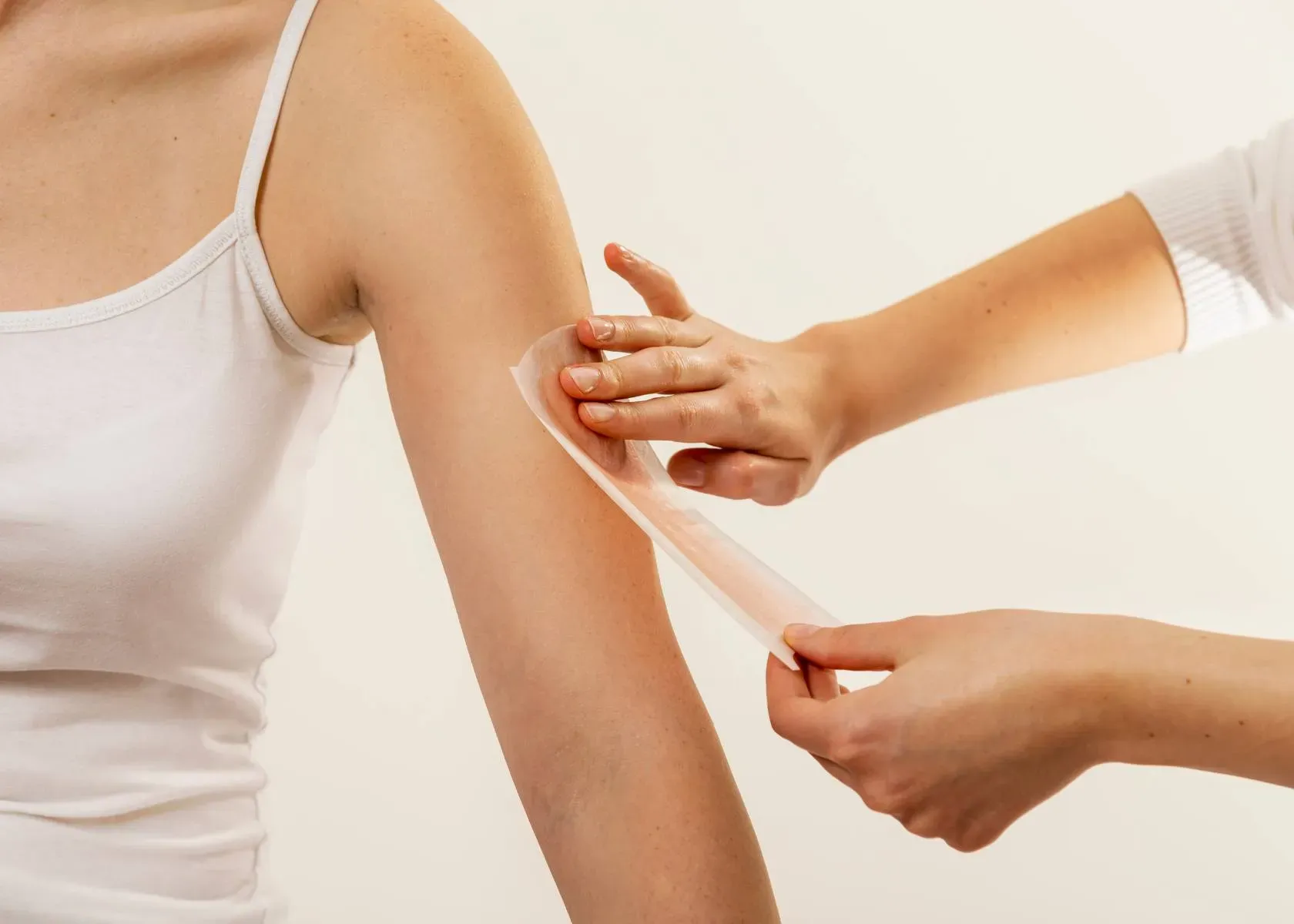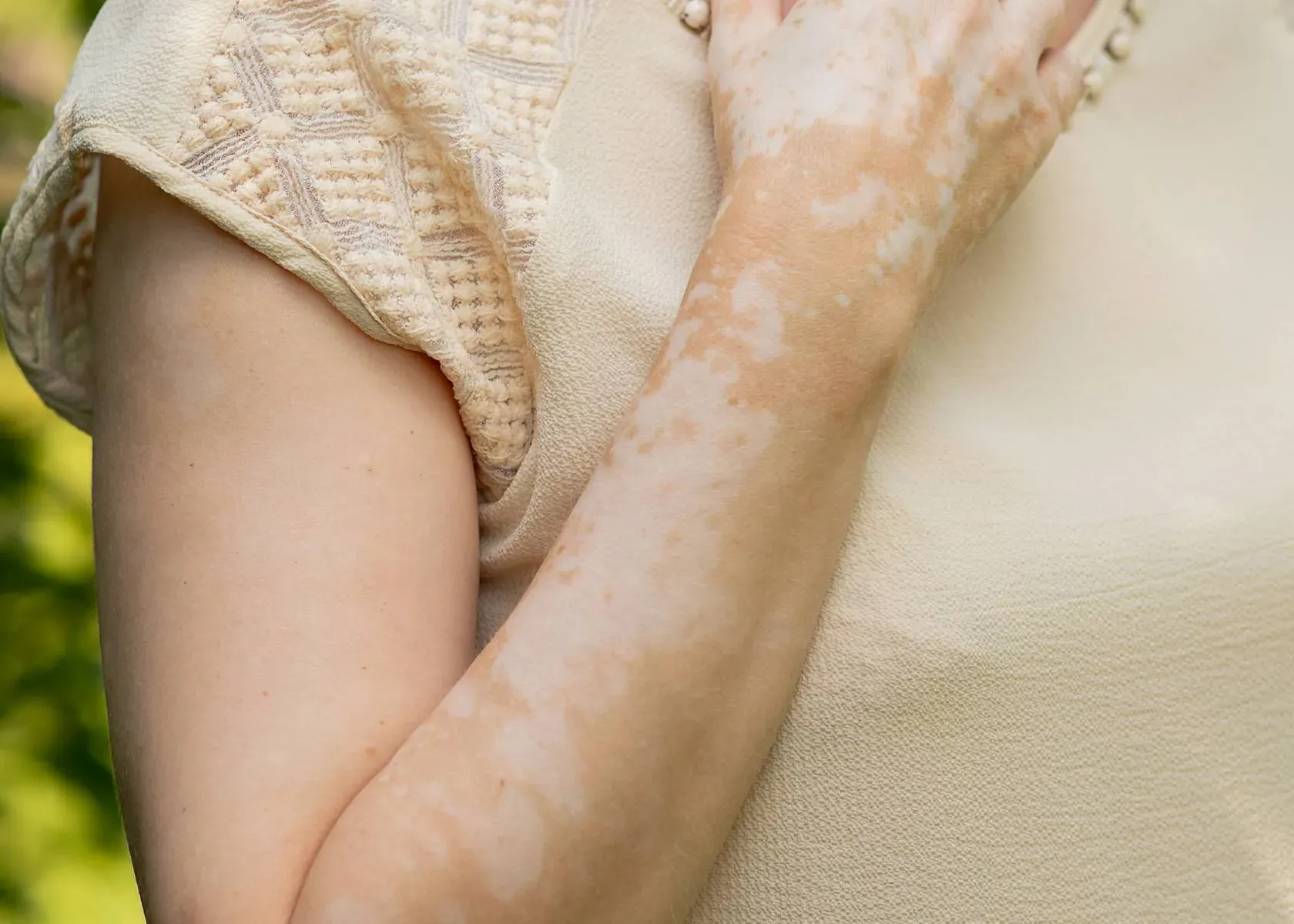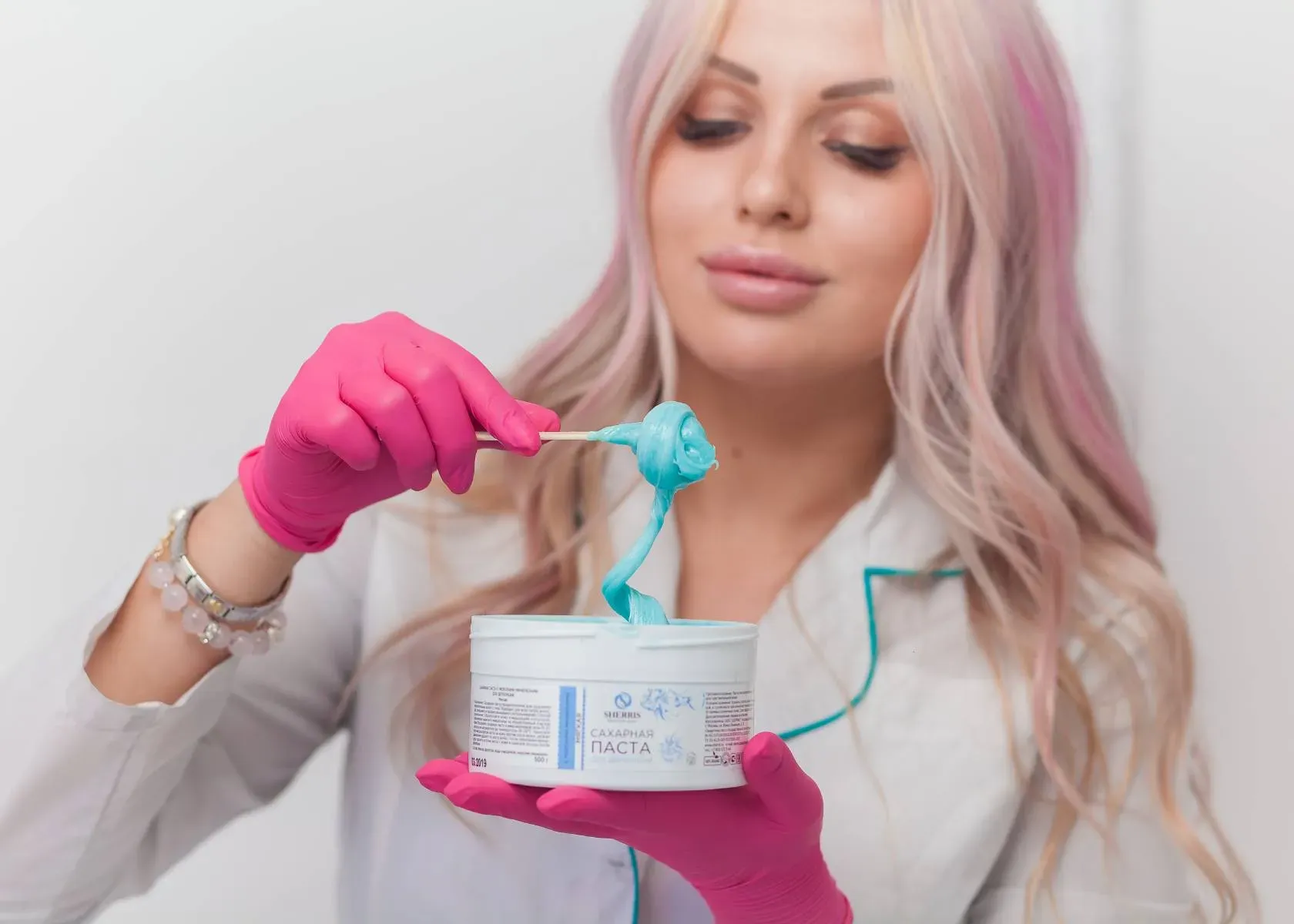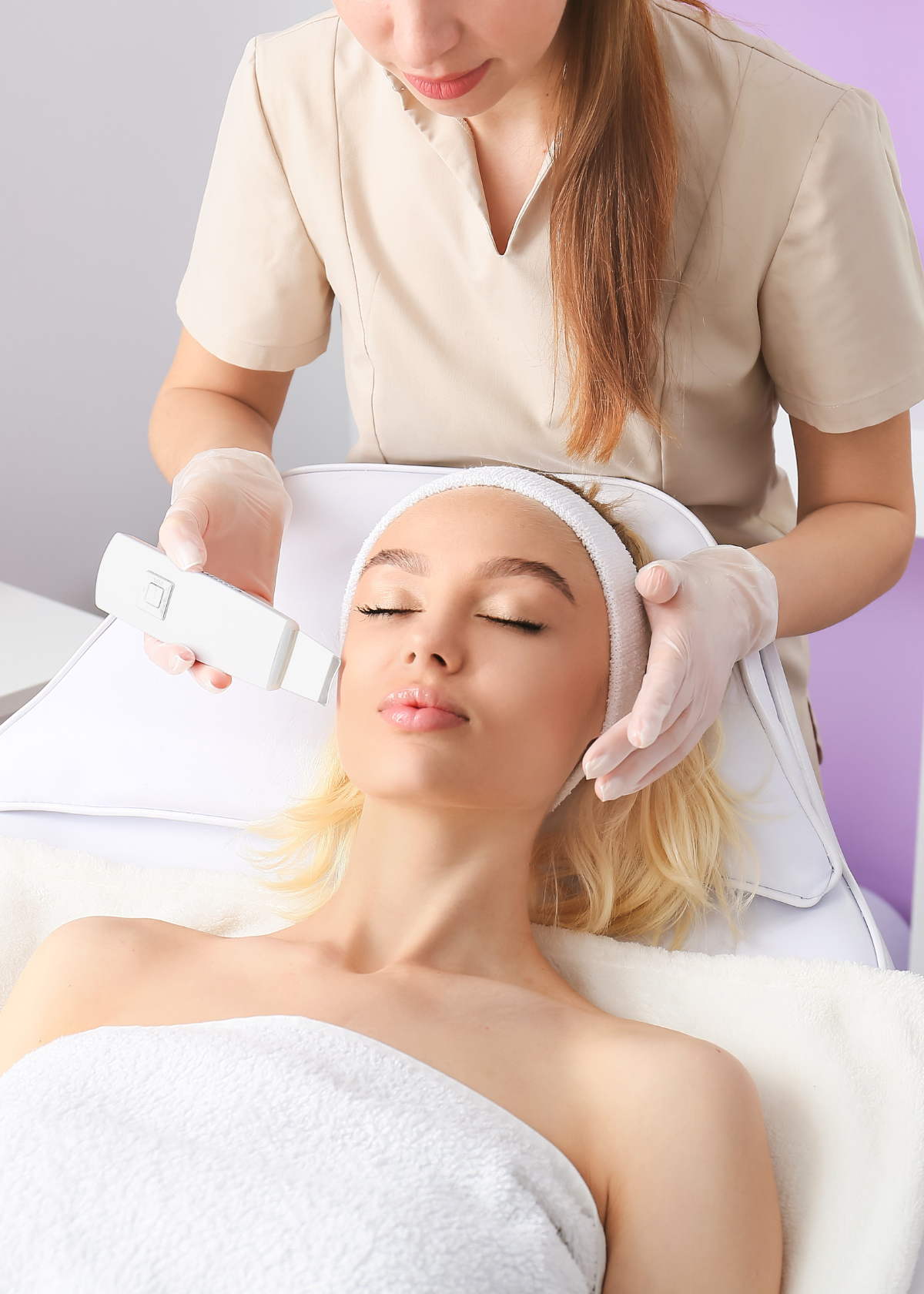Your waxing session just wrapped up, and you're now left staring at dark, discolored patches of skin - hardly the sleek, spotless outcome you had in your mind's eye. Trust me when I say that I can relate to the surprise and stress that hyperpigmentation may bring.
With thorough research and personal trial-and-error, I've pieced together effective strategies to handle this all-too-common but seldom-spoken-about aftermath of waxing.
Here to calm your worries: Yes, indeed, hyperpigmentation from waxing does have the potential to fade away - and I'm excited to share with you exactly how.
Key Takeaways
- Hyperpigmentation from waxing has the potential to fade away naturally, but it may take time and proper skincare.
- Factors such as skin type, depth of pigmentation, and individual healing capabilities can affect the fading process.
- Taking care of your skin before and after waxing, using sunscreen regularly, and consulting a dermatologist for severe cases are important steps in preventing and treating hyperpigmentation caused by waxing.
- Waxing ingrown hair may also fade uneven skin tone and dark skin tone. For sensitive skin, it is not recommended by experts as it can affect skin health.
Understanding Hyperpigmentation from Waxing

Hyperpigmentation from waxing occurs as a result of skin trauma caused by the hair removal process, and it can be differentiated from post-inflammatory hyperpigmentation (PIH).
Causes of Hyperpigmentation After Waxing
Poor waxing techniques trigger hyperpigmentation. Tugging the skin too aggressively can lead to trauma, initiating a chain of events that result in dark spots or areas on the skin.
High-quality products and skilled application lessen this risk significantly. Another crucial factor is sun exposure post-waxing, which can escalate pigmentation issues. Regular exfoliation helps to prevent dead skin cell buildup and reduces hyperpigmentation chances.
It's essential for those with darker skin tones to be particularly vigilant as they have an increased likelihood of experiencing these effects due to higher melanin levels in their skin.
Difference Between Hyperpigmentation and Post-Inflammatory Hyperpigmentation (PIH)
Hyperpigmentation and post-inflammatory hyperpigmentation (PIH) are two terms often used interchangeably, but they have distinct differences. Hyperpigmentation refers to the darkening of the skin due to an increase in melanin production.
It can be caused by various factors such as sun exposure, hormonal changes, or certain medications. On the other hand, post-inflammatory hyperpigmentation (PIH) specifically occurs as a result of trauma or inflammation to the skin, like from waxing or acne.
The key distinction between these two conditions lies in their causes. While hyperpigmentation can stem from multiple sources and is not necessarily related to any specific trigger, PIH is directly linked to some form of skin damage or irritation.
Will Hyperpigmentation from Waxing Fade Away Naturally?

Hyperpigmentation from waxing may fade away naturally, but the process can be influenced by various factors, such as skin type, depth of pigmentation, and individual healing capabilities.
Factors that Can Affect the Fading Process
Proper skincare before and after waxing plays a crucial role in the fading process of hyperpigmentation. Taking care of your skin with gentle cleansers and moisturizers helps to maintain its health and minimize any potential damage from the waxing treatment.
Additionally, protecting the waxed area from direct sunlight is important, as exposure to UV rays can worsen hyperpigmentation. Regular exfoliation also aids in fading dark marks by removing dead skin cells that contribute to discoloration.
By following these steps, you can help promote the natural fading process and achieve clearer, more even-toned skin.
Importance of Proper Skincare Before and After Waxing
Proper skincare before and after waxing is crucial for preventing hyperpigmentation. Before waxing, it is important to prepare the skin by cleansing it thoroughly and exfoliating gently to remove any dead skin cells that can interfere with hair removal.
This helps to ensure a smoother waxing process and minimize the risk of post-inflammatory hyperpigmentation (PIH). After waxing, applying a soothing moisturizer or aloe vera gel can help calm the skin and reduce inflammation.
Additionally, using sunscreen on exposed areas immediately after treatment is essential to protect the vulnerable skin from harmful UV rays that can worsen hyperpigmentation. Taking these simple steps can help maintain healthy and even-toned skin after waxing.
Preventing Hyperpigmentation from Waxing

To prevent hyperpigmentation from waxing, it is important to prepare the skin properly before the procedure, choose the right type of wax for your skin, maintain clean and healthy skin after waxing, use sunscreen regularly, and consult a dermatologist if necessary. Let's take a complete look at each of these methods:
Preparing Skin Before Waxing
To ensure a successful waxing session and reduce the risk of hyperpigmentation, it is essential to properly prepare your skin beforehand. Start by exfoliating the area a day or two before your appointment to remove any dead skin cells that could interfere with the wax adhering to the hair.
This will also help prevent ingrown hairs. Avoid using any lotions or oils on the day of your appointment, as they can create a barrier between the wax and your hair, making it less effective.
Moreover, make sure your skin is clean and dry before starting the waxing process for optimal results. It will help with preventing acne scarring during your efficient Brazilian waxing treatment session.
Choosing the Right Wax
To prevent hyperpigmentation from waxing, it is crucial to choose the right wax for your skin. Opt for a high-quality wax that is suitable for your specific needs, whether you have sensitive or normal skin.
Look for waxes that contain soothing ingredients like chamomile or aloe vera to minimize skin irritation and inflammation. Avoid waxes with harsh chemicals or artificial fragrances that can potentially damage the skin.
Hair removal treatments and unwanted body hair removal require the best wax you can have. So, it is better to carefully select the waxing appointment.
Additionally, consider consulting with a professional esthetician who can recommend the best type of wax and technique for your individual skin type and hair removal needs.
Maintaining Clean Skin After Waxing
It is important to maintain clean skin after waxing to minimize the risk of developing hyperpigmentation. After waxing, make sure to cleanse the treated area with a gentle cleanser and lukewarm water to avoid skin redness.
Avoid scrubbing or exfoliating the skin for at least 24 hours to allow it time to heal. Pat dry gently with a clean towel, and avoid using any harsh products or fragrances that can irritate the skin.
Additionally, keep the waxed area moisturized with a lightweight, non-comedogenic lotion or oil-free moisturizer. By practicing good hygiene and taking care of your skin post-waxing, you can help prevent complications like hyperpigmentation from occurring.
Sunscreen Usage
Proper use of sunscreen is essential in preventing hyperpigmentation after waxing. Sunscreen creates a protective barrier on the skin, shielding it from the harmful effects of UV rays.
Applying sunscreen with a high SPF before and after waxing can help prevent dark spots and pigmentation issues caused by sun exposure. It is important to choose an oil-free, non-comedogenic sunscreen that suits your skin type.
Remember to reapply sunscreen every two hours when spending time outdoors or if you sweat excessively. Taking this simple step can greatly reduce the risk of hyperpigmentation and keep your skin looking healthy and even-toned.
Consulting a Dermatologist for Severe Cases
If hyperpigmentation from waxing persists or worsens despite your efforts, it may be necessary to consult a dermatologist for further evaluation and treatment options. A dermatologist can assess the severity of your condition and provide you with targeted solutions to address the dark marks on your skin. The dermatologist will also determine skin health based on several factors.
They may recommend specific creams, treatments, or procedures that are best suited for your individual case. It's important to seek professional help if you have severe hyperpigmentation or if home remedies are not providing the desired results.
Dermatologists have expertise in dealing with skin issues and can offer personalized advice to help fade those stubborn dark spots caused by waxing.
How to Lighten Hyperpigmentation After Waxing?

To lighten hyperpigmentation after waxing, you can try various methods such as chemical peels, incorporating retinoids into your skincare routine, exfoliating regularly, and using targeted lightening creams and treatments to fade those dark marks on the skin. Let's take a look at each of these options:
Chemical Peels
Chemical peels can be an effective treatment option for lightening hyperpigmentation caused by waxing. These peels involve the application of a chemical solution to the skin, which helps exfoliate and remove damaged outer layers.
This process stimulates the growth of new, healthier skin cells and fades dark marks over time. Chemical peels are available in different strengths, so it's important to consult with a dermatologist to determine the most suitable peel for your specific needs.
Regular treatments can significantly improve the appearance of hyperpigmentation and promote overall skin rejuvenation.
Incorporating Retinoids Into Skincare Routine
I have found that incorporating retinoids into your skincare routine can be a beneficial way to lighten hyperpigmentation caused by waxing. Retinoids, such as tretinoin and adapalene, are derivatives of vitamin A that work by increasing cell turnover and promoting the growth of new skin cells.
This can help fade dark marks on the skin and even out its tone over time. It is important to start with a low concentration of retinoids and gradually increase usage to minimize any potential irritation or dryness.
Additionally, it is recommended to use sunscreen daily when using retinoids, as they can make your skin more sensitive to sunlight. Regular use of retinoids along with other targeted treatments like chemical peels or lightning creams, can help accelerate the fading process for hyperpigmentation caused by waxing.
Exfoliation
Regular exfoliation is an essential step in preventing hyperpigmentation after waxing. By gently removing dead skin cells from the surface, exfoliation helps to prevent the buildup of pigmented cells that can lead to dark spots.
It also promotes skin cell turnover, allowing new, healthier skin cells to emerge and gradually fade away any existing hyperpigmentation. Look for gentle exfoliating products that contain ingredients like alpha hydroxy acids (AHAs) or beta hydroxy acids (BHAs), which help to slough off dead skin cells effectively.
However, be cautious not to over-exfoliate, as it can irritate the skin and worsen hyperpigmentation.
Natural Remedies
For those looking for natural remedies to lighten hyperpigmentation after waxing, there are several options available. One effective method is using lemon juice, which contains natural bleaching properties.
Simply apply fresh lemon juice to the affected areas and leave it on for about 15 minutes before rinsing off. Another natural remedy is aloe vera gel, known for its soothing and healing properties.
Apply a thin layer of aloe vera gel to the hyperpigmented areas and leave it on overnight to promote skin repair and fading of dark marks. Additionally, incorporating ingredients like turmeric or honey in homemade face masks can help brighten the skin and reduce pigmentation.
Lightening Creams
Treating hyperpigmentation caused by waxing can be done with the use of lightening creams. These creams contain ingredients like hydroquinone, niacinamide, and mandelic acid, which are known for their ability to fade dark marks on the skin.
Applying these creams regularly can help speed up the fading process of hyperpigmentation. It's important to note that results may not be immediate, and it may take some time for the pigmentation to fully lighten.
However, with consistent use and a proper skincare routine, lightening creams can be an effective treatment option for reducing hyperpigmentation after waxing treatments.
Frequently Asked Questions
After reviewing studies on post-inflammatory hyperpigmentation and consulting dermatology experts, I have valuable insights to share.
In the following FAQs, I’ll address how long it typically takes for hyperpigmentation from waxing to go away, what factors affect its persistence, tips for speeding up fading, and whether there are ways to prevent it from occurring.
How long does it take for hyperpigmentation to fade?
Hyperpigmentation caused by waxing typically takes about three to four weeks to fade away. However, the exact duration may vary depending on factors such as post-waxing care and your skin type.
It's important to take proper care of your skin before and after waxing, avoid direct sunlight immediately after treatment, and consider using targeted creams or treatments with ingredients like hydroquinone, niacinamide, and mandelic acid to help speed up the fading process.
If hyperpigmentation persists or worsens, it's best to consult a dermatologist for further evaluation and treatment options.
How to fix skin discoloration from waxing?
To fix skin discoloration from waxing, there are several methods that can help lighten dark spots and even out the skin tone. One option is to incorporate targeted creams and treatments into your skincare routine.
Look for products containing ingredients like hydroquinone, niacinamide, or mandelic acid, which can help fade hyperpigmentation caused by waxing. Another approach is to exfoliate regularly to remove dead skin cells and promote the regeneration of new, healthy skin.
Additionally, natural remedies such as lemon juice or aloe vera may have lightening properties that can be effective in reducing discoloration. If the problem persists or worsens, it's always a good idea to consult with a dermatologist for further evaluation and personalized treatment options.
Can waxing make hyperpigmentation worse?
Waxing can indeed make hyperpigmentation worse if not done properly. Poor technique during waxing, such as pulling the wax off too forcefully or applying it to sensitive areas, can cause trauma to the skin and trigger post-inflammatory hyperpigmentation (PIH).
This means that dark spots or patches of discoloration may appear on the skin after waxing. To minimize the risk of worsening hyperpigmentation, it is important to choose a skilled esthetician who uses expert techniques and high-quality products.
Conclusion
Hyperpigmentation from waxing can fade away naturally, but it may take time and proper skincare. Factors such as skin type and post-waxing care can affect the fading process. It is important to take precautions, such as using sunscreen and consulting a dermatologist for severe cases.
Additionally, targeted creams and treatments can help lighten hyperpigmentation caused by waxing. With patience and consistent care, you can see improvements in the appearance of dark marks on your skin.
Learn More About Hyperpigmentation






